In this article, you will learn how to play Raining in Manila. The part that will be learning will be the Chords of the song and how to play it in the keyboard piano.
Raining in Manila is a song by Lola Amour – a band in the Philippines that their name came from the lead vocal’s grandmother. Their songs has this brass sound from their saxophone and trumpet combined with funky electric guitar riffs and subtle keyboard sounds that makes them distinct to other bands. This song has gone viral online since its release in the rainy season in the Philippines. Every tiktok video related to the rain and floods has set their background music of this song.
The song starts by the keyboardist playing at the intro. After two times, the band will enter and their catchy part of the song now started. If you hear the song from the verse, the keyboard sound will be heard there then after 2 lines of stanza, the brass section now appears. The brass comes every now and then throughout the song especially when it comes to the instrumental part. There are 3 sections in the instrumental part: the ensemble, the slow part for saxophone and the fast part for the trumpet. It will go back to pre-chorus then go to the last chorus part.
How to play Raining in Manila in Keyboard Piano
You can refer on my video regarding the timing but the notes are what they are.
Intro (Keyboard):
On the right hand, the starting notes are the following:
F# (3x)
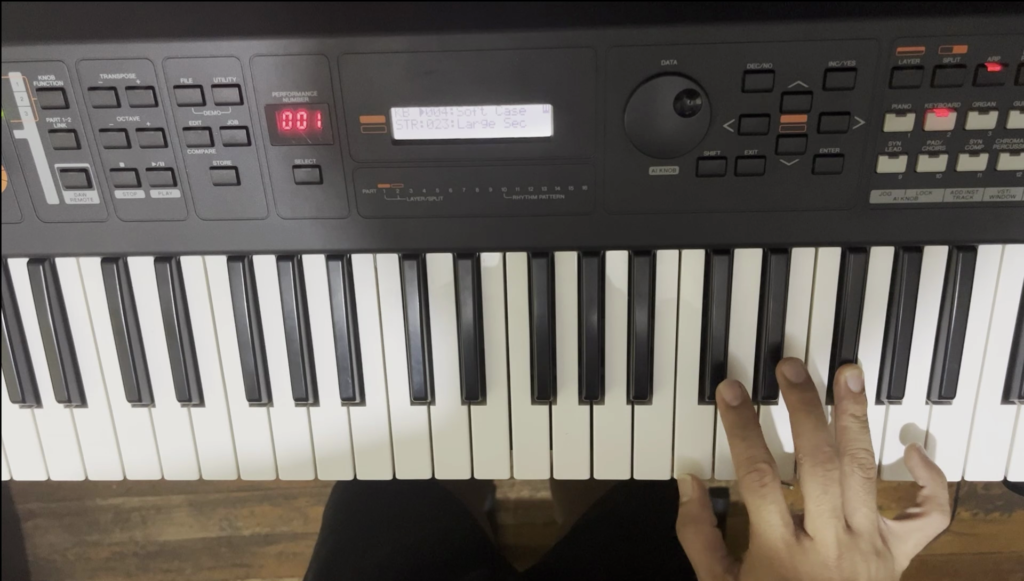
D#
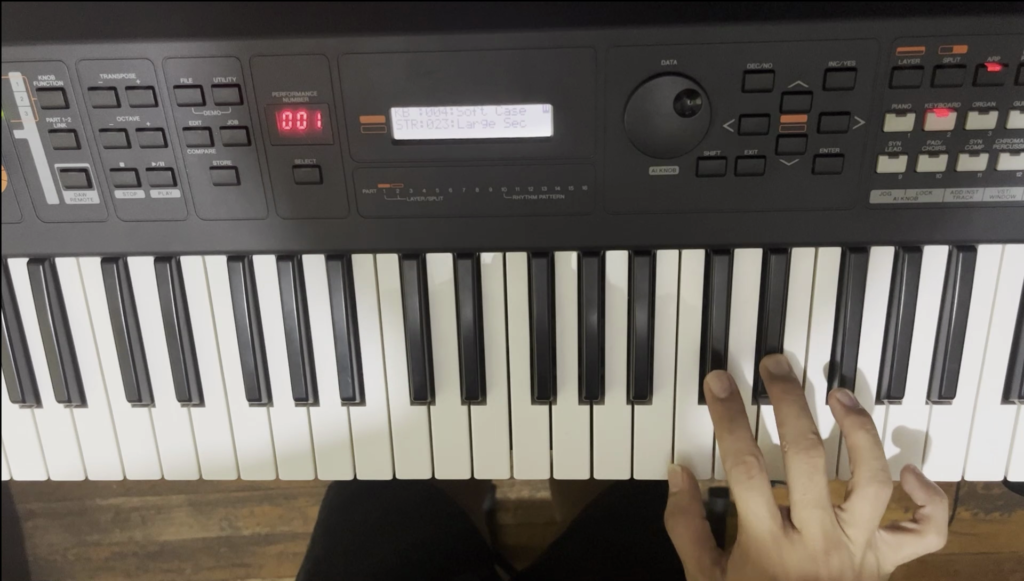
C#
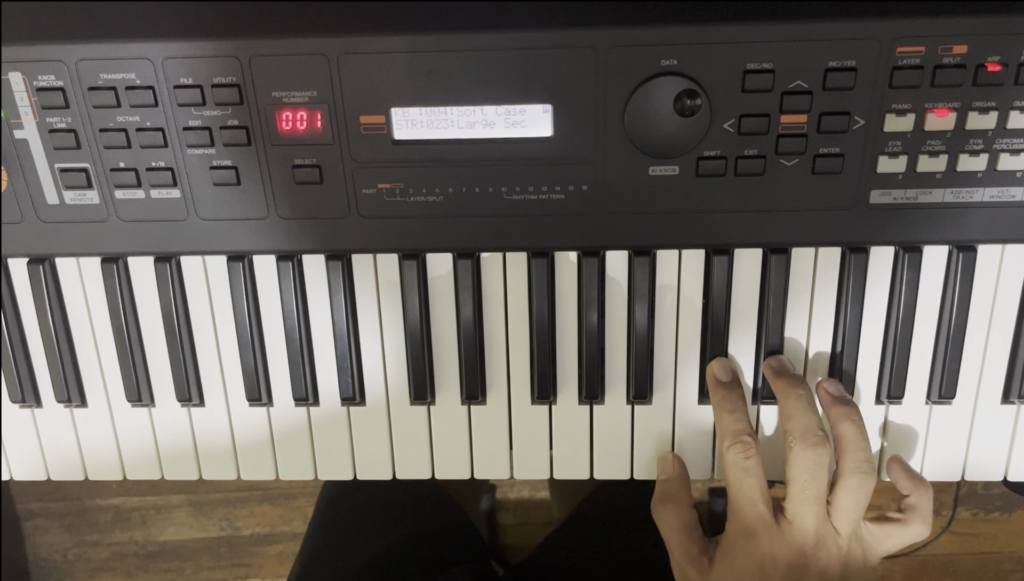
B
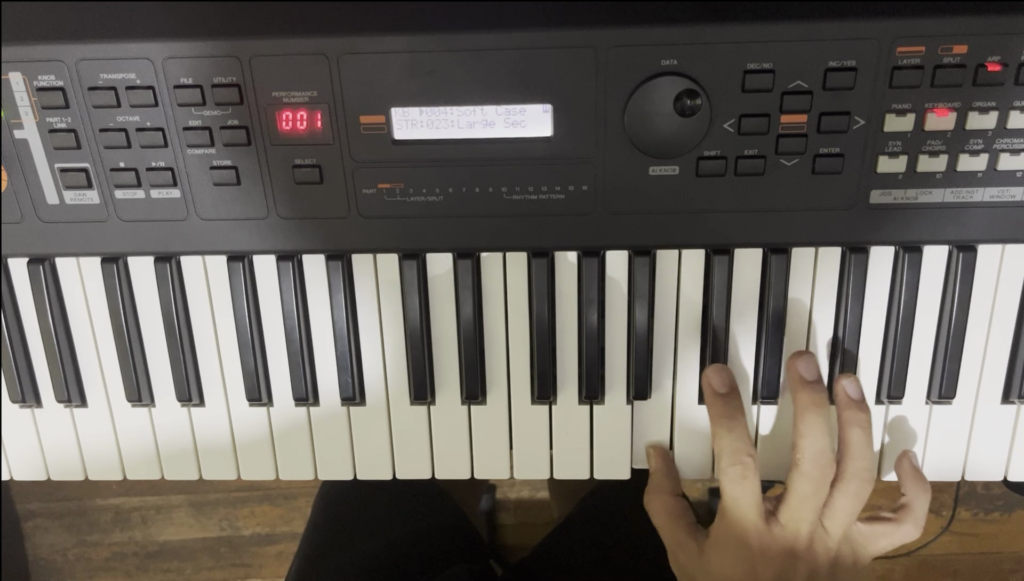
and repeat it but at an extra F# note.
On the left hand, the are the following:
E Chord (E and B notes):
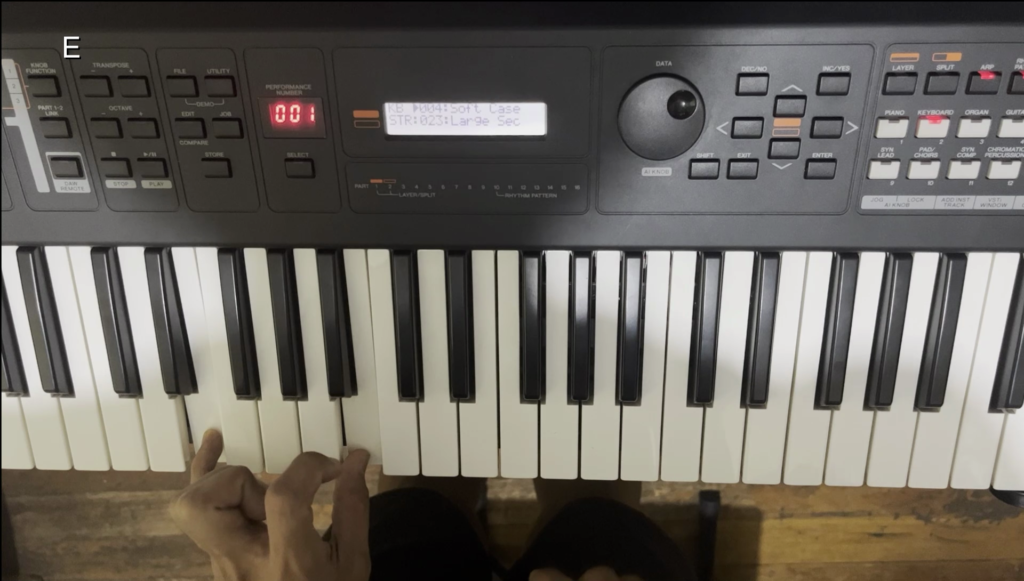
F# Chord (F# and C# notes):
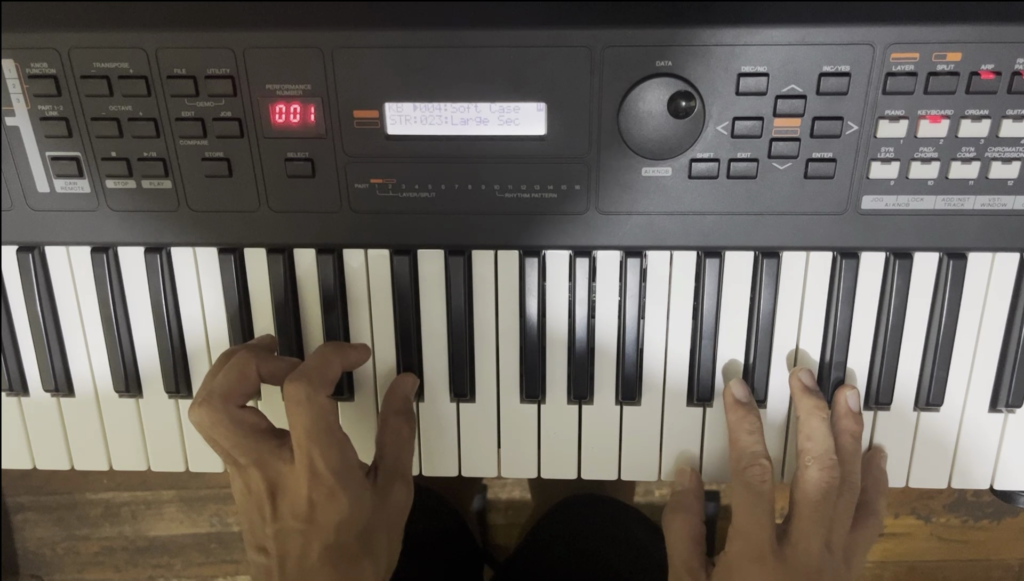
G#m Chord (G# and D# notes):
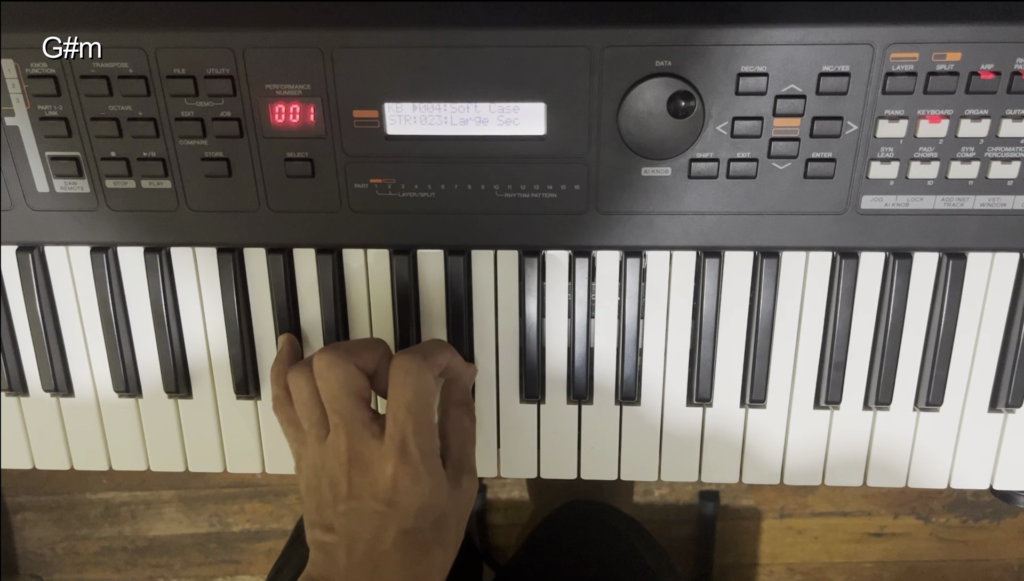
Combine the left hand chord and the right hand notes. Repeat 4x. After these there are still 2x repeat with the brass section and you can just do the chords on boths sides of the hands. Altenately, you can split the brass on the upper side and the keyboard sound on the lower side to do both sounds at the same time.
Intro (Brass):
The brass section will appear after the intro of keyboard 4 times. This will also serve as the first two parts of the chorus. The notable difference of the intro and the chorus is the timing of the pause. At intro, the pause comes after the word “babalik”. At chorus, the pause will be at the 2nd line which is the “when it’s been” and the drop will be on the word “raining”.
The notes can be based from the above images. The notes are the following:
F# – C# – D# | D# – C# – D#
Note that you can want to do this part, you can either split the sounds on your keyboard or if you have another keyboard player, that person can play one of these parts.
Verse:
The verse 1 and even verse 2 in keyboard part starts with the EM7 and G#m Chord while doing (dut-dut-dut-dut dut-dut dut-dut-dut) style of comping in piano (please also refer on my youtube tutorial on this). Do this 2 times. Before the 2nd G#m, the brass part will enter the scene. Notes descending (G#-F#-D# D#-C#-B-C#-D#). On the second time, the notes are in these combination (G#-F#-D#-C#-B-G#(low oct) B). Then lastly (B-C#-G#).
Pre-Chorus:
The chords in Keyboard are: EM7, A7, G#m7, C#7, C#m7 then E/F#. when doing the E/F# chord, it should be tapped 5 times (bam-bam-bam-bam-bam). Before going to chorus, there is a passing chord after the 5 bams of E/F# chord then bam the E/F.
The brass notes according to the line with the corresponding chords are the following:
EM7 (B-C#-D#)
A7 (C#)
G#m7 (B)
C#7 (D#-C#-B)
C#m7 (B)
E/F# (B) – also 5 times
E/F (B) – 1 time
Chorus:
Using the chords of the intro for 3 times and also the brass notes these are these combinations:
EM7 (F#)
F# (C#)
G#m (D#)
But at the third time, there is a delay then drop the chord/notes above. After this, the chord changes a bit when at the part of “Pag wala ang mga tala”. The chords are, EM7, F#, Gdim, G#m7. No brass at this part.
Then at C#7 chord, there are notes on brass (G#-A#-B). On C#m7 and E/F# (B). Before going to verse 2, there is a one last drop of E/F# and (B) note.
Verse 2 (Brass):
The brass notes according to the line with the corresponding chords in Verse 2 after the 2 line with Keyboard are the following:
(G#-F# D#-C# C#-B G#-B)
(F#-G# B-C#-D#-C#-B B)
Then there goes the part where the brass are non-stop playing:
EM7 (B-B-C#-B D#-B)
(F#-G#) G#m
EM7 (B-B B-C#-D#-F#-C#-B B)
(B-B-C#-B B-B B-C#-B-F#-D#-C#-B) G#m
Repeat the Pre-Chorus and Chorus again but this time, there is a drop 5 times at the chord E/F# (B) then 1 time with E/F (C#). We are now entering to the instrumental part. The drops and the instrumental are connected.
Instrumental:
The instrumental can be divided into 3 parts – the first part (Brass), the slow part (Saxophone) then the fast part (Trumpet). The first progression are repeated 2 times but there are 3 notes (C#-D#-F#) in between the first loop and the second loop. After the slow part, the song will go back to Pre-Chorus then the last Chorus.
First Part:
EM7 (D# F#-D#-C#-B)
F# (F#-G#-B-C#)
Gdim (F#-D#-C#-B)
G#m (F#-G#-B-C#)
(C#-D#-F#) EM7 (F#-D#-C#-B)
F# (F#-G#-B-C#)
Gdim (F#-D#-C#-B)
G#m (F#-G#-B-C#)
Slow Part:
(G#-B-C#-D#) (F#-D#)
(G#(high) G#-F#-F) (F#-F) (F#-F) (descend)(D#-C#) (A#-G#) (F#-E)
(D#-C#) (B-C#-D#) (D#-F#-G#-F#-G#-A#) (C#-B-A#-G#-F#-C#-A#)
(D#-C#-B-G#-D#(low))
Fast Part:
(B-C#-D#) (F#-F#-F#-F#-F#) (D#-D#-F#-F#)
(F#-F#-F#-F#-F#) (F#-F#-G#-G#)
(F#-F#-F#-F#) (descend)(F#-G#-F#) (D#-C#-B-G#) (F#) (D#-C#-B)
(B-C#-D#(long))
(G#-B-C#-D#) (F#-G#-F#) (F#(high))
Tag(on Last Chorus):
This is the part after the 3 lines of chorus and has no brass part. The lyrics on this part are “Andyan lang ang mga tala”. The chords are: EM7, F#, Gdim, G#m7. Repeat 2 times. Then repeat the at C#7 chord, there are notes on brass (G#-A#-B). next is “Saan mang sulok ng mundo” chords is C#m7. Lastly, the E/F# (B) combination will have a 5 times drop and the song will end abruptly.
That’s it! You can now play the song Raining in Manila, for reference, I will also include my video tutorial on Keyboard and Brass. Enjoy practicing!

